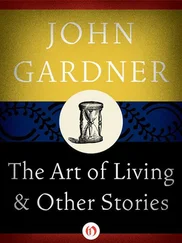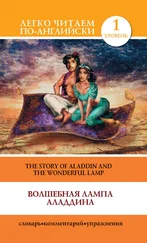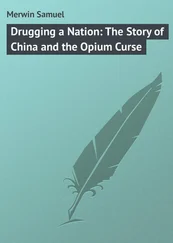Edmund Gardner - The Story of Siena and San Gimignano
Здесь есть возможность читать онлайн «Edmund Gardner - The Story of Siena and San Gimignano» — ознакомительный отрывок электронной книги совершенно бесплатно, а после прочтения отрывка купить полную версию. В некоторых случаях можно слушать аудио, скачать через торрент в формате fb2 и присутствует краткое содержание. Жанр: foreign_antique, foreign_prose, на английском языке. Описание произведения, (предисловие) а так же отзывы посетителей доступны на портале библиотеки ЛибКат.
- Название:The Story of Siena and San Gimignano
- Автор:
- Жанр:
- Год:неизвестен
- ISBN:нет данных
- Рейтинг книги:3 / 5. Голосов: 1
-
Избранное:Добавить в избранное
- Отзывы:
-
Ваша оценка:
- 60
- 1
- 2
- 3
- 4
- 5
The Story of Siena and San Gimignano: краткое содержание, описание и аннотация
Предлагаем к чтению аннотацию, описание, краткое содержание или предисловие (зависит от того, что написал сам автор книги «The Story of Siena and San Gimignano»). Если вы не нашли необходимую информацию о книге — напишите в комментариях, мы постараемся отыскать её.
The Story of Siena and San Gimignano — читать онлайн ознакомительный отрывок
Ниже представлен текст книги, разбитый по страницам. Система сохранения места последней прочитанной страницы, позволяет с удобством читать онлайн бесплатно книгу «The Story of Siena and San Gimignano», без необходимости каждый раз заново искать на чём Вы остановились. Поставьте закладку, и сможете в любой момент перейти на страницу, на которой закончили чтение.
Интервал:
Закладка:
The Siena of this epoch of Guelf predominance is that luxurious city of the gente vana , the “vain folk,” that Dante knew, the city whose paths he trod in the early days of his exile. Senseless extravagance reigned side by side with hectic devotion and mystic enthusiasm. Typical, indeed, of this time are two figures of whom we read in the Divina Commedia ; the young nobleman, Lano Maconi, who, having squandered all his substance in riotous living, joined in the unsuccessful expedition of the Sienese and Florentines against Arezzo in 1288, and, when the Sienese fell into an ambush at the ford of Pieve del Toppo, instead of saving his life by flight, dashed into the middle of the Aretines and found the death he sought; Pietro Pettignano, Franciscan tertiary and combseller of the Terzo di Camollia, who saved the soul of Monna Sapia by his prayers, saw visions and wrought miracles, and after a life of humility and righteousness died in 1289, and was venerated as a saint. 9 9 Inf. xiii. 120; Purg. xiii. 128.
Magnificent processions, gorgeous ceremonies of church and state, sumptuous balls and banquets, celebrated the bestowing of the order of knighthood upon the nobles of city and contado – each aristocratic house striving to eclipse the other in lavish hospitality and brilliant display. Amidst it all we hear the voice of that realist of the Trecento – Cecco degli Angiolieri, who “anticipates Villon from afar” 10 10 J. A. Symonds.
– singing of the three things for which he cares, la donna , la taverna , e’ l dado , celebrating his sordid passion for Becchina, the shoemaker’s daughter, pouring venomous abuse upon his own father, who persisted in living on and thus keeping him out of his heritage, railing against all mankind in half furious, half humorous style, daring to break a lyric lance even with the divine Florentine, Dante Alighieri himself. More characteristic of Siena is Cecco’s contemporary; Folgore da San Gimignano, in his corona of fourteen sonnets addressed to the brigata nobile e cortese , a club of twelve extravagant young Sienese nobles. Month by month through the year he sets forth a round of pleasures of every kind, feasting and hunting, music and jousting (the latter, in spite of a reference to Camelot, of a very harmless, carpet-knight description), dallying in pleasant places with lovely women. Nowhere else shall you find so perfect a picture of the splendid life and delicate living of courtly circles in “soft Siena” — Siena l’amorosa madre di dolcezza , as another poet called her – with her gay young gallants —
“Who as King Priam’s sons might surely stand,
Valiant and courteous more than Lancelot,
Each one, if need should be, with lance in hand,
Would fight in tournament at Camelot.”
It was from these glittering, luxurious scenes that one of Siena’s proudest nobles, Bernardo Tolomei, fled to the desert, in 1313, to found the great convent of Monte Oliveto Maggiore, and to return to the city in 1348 with his white-robed companions, to lay down his life for his fellow-countrymen during the pestilence.
Until the advent of that terrible pestilence of 1348, the epoch of the supremacy of the Nine is the brightest in the history of Siena. “In that time,” wrote Fra Filippo Agazzari, a few years later, “the city of Siena was in such great peace, and in such great abundance of every earthly good, that almost every feast day innumerable weddings of young women were celebrated in the city.” 11 11 Assempro II.
It is the epoch in which most of Siena’s noblest buildings were reared, the epoch in which its three supreme painters – Duccio di Buoninsegna, Simone Martini, Ambrogio Lorenzetti – for a brief while raised the school of their native city to an equality with that of Florence. Trade flourished, the university prospered; the Republic remained Guelf, though it retained a certain Ghibelline element within its core that kept it from an aggressive policy, and led the more strenuous Florentines to a proverb touching their neighbour: La lupa puttaneggia , “the she-wolf plays the harlot.” In 1303 the Sienese purchased Talamone – which they fondly hoped to make into a valuable sea-port whereby they might become a great maritime power to rival Genoa or even Venice – from the Abbot of San Salvadore. Henceforth, to their mocking neighbours, they became the “vain folk that hopes in Talamone,” upon which they spent enormous sums of money with no result, owing to the unhealthiness of the situation and the impossibility of keeping the harbour clear. They joined the Italian league against Henry of Luxemburg, sent men and money to the defence of Brescia, and, by their prompt assistance to the Florentines, helped in forcing the Emperor to raise the siege of Florence in 1312, when his army wasted their contado. A little later, when Uguccione della Faggiuola was upholding the imperial cause, 400 Sienese cavalry and 3000 infantry were in the Guelf army that was annihilated at Montecatini in 1315. But in 1326, when Duke Charles of Calabria came to Siena on his way to Florence, and demanded the lordship of the former city as well, they rose in arms against him, barricaded the streets with chains, and forced the proud Guelf prince to accept their terms. The Duke of Athens, in 1343, having made himself tyrant of Florence, attempted to get Siena into his hands, by stirring up the nobles against the Nine; the Nine retaliated by arranging the conspiracy that caused his overthrow and his expulsion from Florence. “For three days,” writes Bindino da Travale, “the balzana floated over the Tower of the Commune of Florence, alone, without any other banner.”
The external wars of this epoch, mainly against Pisa, were unimportant. Within Siena itself the harmony was by no means unintermittent. A passage that we read in the Cronica Senese under the year 1314 is only too typical: “On the sixteenth day of April there was great tumult and battle in Siena, between the Tolomei and the Salimbeni, and all the city was up in arms.” And, in addition to the never ending feud between these two great houses, there were political interests at stake. The Tolomei, with whom were other houses of the magnates, were opposed to the Nine, and adopted the cause of the lower classes of the people, the popolo minuto , who were excluded from the Government by the burgher oligarchy. In 1318 the Tolomei, with certain of the Forteguerri and other nobles, plotted with the notaries and butchers and a number of artisans, to overthrow the Nine; but the attempt was easily repressed. A prolonged vendetta between Salimbeni and Tolomei kept the whole city disturbed between 1320 and 1326, while similar feuds, accompanied by ferocious murders and sanguinary riots, between the Malavolti and Piccolomini, Saracini and Scotti, enlivened the two following decades of the century. In 1346, a section of the Tolomei, allied with the popolo minuto , attempted a rising in the contrada of the Porta Ovile; several of their plebeian adherents were hanged, but the Captain of War was afraid to lay hands upon the nobles. In 1347, the Pope’s legate and the Nine succeeded in reconciling the Piccolomini and the Malavolti.
The terrible pestilence, known as the Black Death, that swept over Europe in 1348, devastated Siena for nearly six months. Even when we remember Boccaccio’s pages, we still read the account in the Cronica Senese with a fresh thrill of horror. 12 12 Agnolo di Tura, Cronica Senese , 122-124.
It raged from May to October. Men and women felt the fatal swelling, “and suddenly, crying out, they died. The father hardly stayed to see his son; one brother fled the other; the wife abandoned her husband; for it was said that this disease was caught by looking, and in the breath.” So great was the mortality that none could be hired to bury the dead. No sooner was a man’s breath out of his body, than his friends took him to the church and buried him, without any funeral service, as best they could. Huge trenches were dug in different parts of the city, and the dead thrown in, indiscriminately, in great heaps. “And I, Agnolo di Tura called Grasso, buried five of my sons in one trench with my own hands; and many others did the like. And also there were some that were so badly covered up that the dogs dragged them out, and ate many bodies in the city. No bells tolled, and no one wept at any misfortune that befel, for almost every person expected death; and the thing went in such wise that folk thought that no one would remain on live, and many men believed and said: This is the end of the world. Here no physician availed, nor medicine, nor any defence; rather it seemed that the more precaution a man took, the sooner he died.” About three quarters of the inhabitants of city and contado perished, though the “more than 80,000 persons” of Agnolo di Tura must be an exaggeration. While the pestilence raged most fiercely, Bernardo Tolomei and his white robed Olivetani came down from their cloistered retreat to tend the stricken people of their native city, and almost all, including Bernardo, died with them. In the following year the Sienese who survived gave themselves up to feasting and riotous living. They all behaved for a while like brothers and relations, says the chronicler; each one felt as though he had won back the world, and no one could settle down to doing anything. And for a long while Siena seemed uninhabited, per Siena non pareva che fusse persona .
Интервал:
Закладка:
Похожие книги на «The Story of Siena and San Gimignano»
Представляем Вашему вниманию похожие книги на «The Story of Siena and San Gimignano» списком для выбора. Мы отобрали схожую по названию и смыслу литературу в надежде предоставить читателям больше вариантов отыскать новые, интересные, ещё непрочитанные произведения.
Обсуждение, отзывы о книге «The Story of Siena and San Gimignano» и просто собственные мнения читателей. Оставьте ваши комментарии, напишите, что Вы думаете о произведении, его смысле или главных героях. Укажите что конкретно понравилось, а что нет, и почему Вы так считаете.












